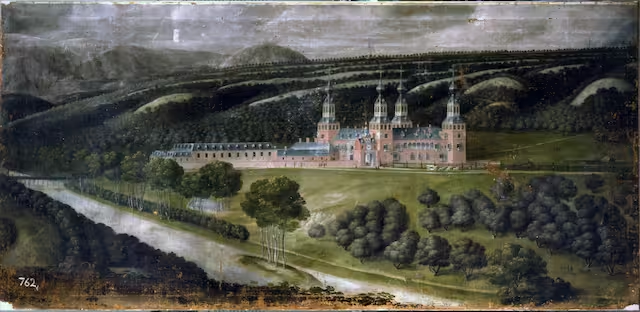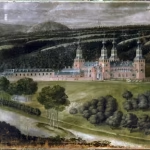Located on the outskirts of Madrid, surrounded by the El Pardo forest from which it takes its name, this palace has served as a resting place for monarchs and as the setting for important political events. Today, it remains a significant symbol of the Spanish monarchy, in addition to housing a rich art collection and serving as a venue for official events.
The Origin of the Palacio de El Pardo
The history of the Palacio de El Pardo dates back to the 14th century, when the El Pardo forest was a popular hunting ground for Castilian monarchs. In 1405, Henry III ordered the construction of a royal house or small castle on this site, which Emperor Charles V replaced with a newly built palace between 1540 and 1558, designed by Luis de Vega, in the form of a square alcázar, with towers at the corners and surrounded by a moat. Philip II beautified it between 1563 and 1568 in the Italian style, with stuccoes, murals, and portraits of the royal family, mostly works by prestigious painters such as Becerra, Titian, Antonio Moro, and Sánchez Coello.
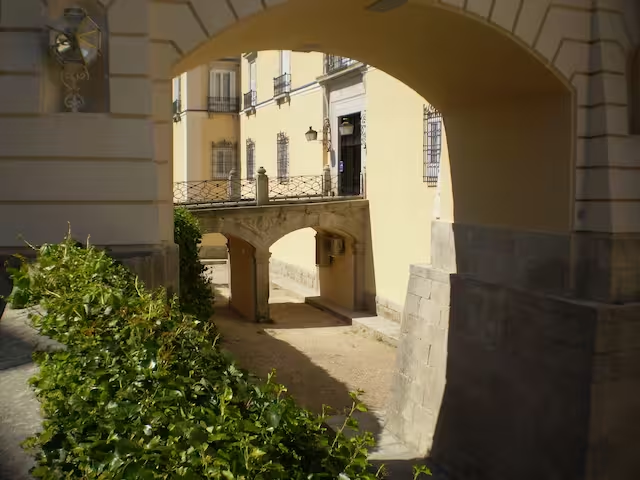
The 1604 Fire and Its Impact on the Palace
The 1604 fire was a disaster for Spanish artistic heritage. The flames destroyed almost five hundred valuable works, including paintings and other culturally significant pieces. Despite the magnitude of the tragedy, some works managed to survive the flames, most notably Titian’s painting Jupiter and Antiope—also known as the Venus of El Pardo—which was a huge relief for Philip III. “If that painting survived, nothing else matters,” the monarch is said to have commented upon hearing the news of the tragic event.
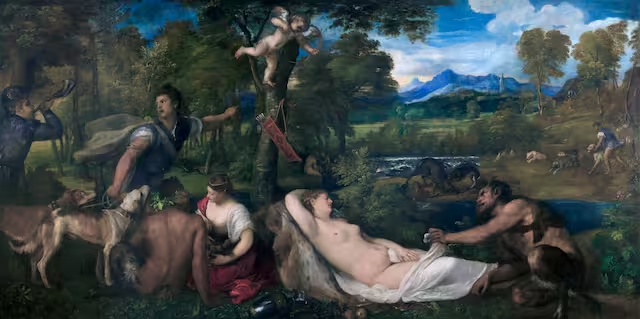
After the fire, in which only the southwest tower survived, the palace was rebuilt by architect Francisco de Mora. After his death, his nephew Juan Gómez de Mora continued the work, completing the construction under the reign of Philip IV.
Subsequent Transformations and the 20th Century
Over the centuries, the Palacio de El Pardo underwent various transformations, constantly adapting to the new demands of each historical period. During the reign of Philip V, the monarch, drawn to the rugged character and serenity of the El Pardo natural surroundings, decided to make it the main residence of the court during the winter months and had the Royal Chapel built, integrated into the Palace. This choice reflected not only the desire to escape the bustle of the capital but also an eagerness to find in El Pardo a more intimate and suitable refuge for the cold seasons.
Philip V’s son, Charles III, was also deeply attracted to El Pardo, and his appreciation for the palace was such that he reestablished it as the main residence of the court during the winter. Under his reign, El Pardo underwent one of its most notable architectural transformations, with a significant extension that added a wing to the east, resulting in a new main façade facing south, along with a central courtyard that reorganized the vast space created.
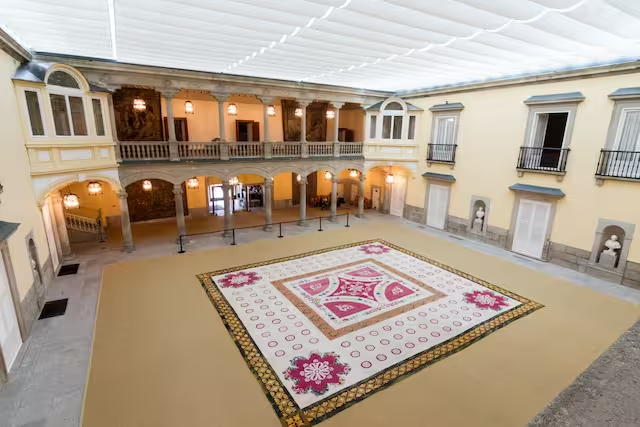
The palace suffered significant damage during the Civil War, but after the conflict ended, it was restored and adapted to serve as the residence of the Head of State, Francisco Franco, who lived there from 1940 to 1975.
Legacy and Current Status of the Palacio de El Pardo
Today, the Palacio de El Pardo continues to be a prominent historical symbol of Spain. After Franco’s death, it was incorporated into the national heritage and opened to the public. Visitors can admire its valuable collection of paintings and tapestries from the 16th and 18th centuries, which decorate its walls, as well as the elegant furniture that accompanies it.

Its rich history, marked by the 1604 fire and subsequent transformations, makes the Palacio de El Pardo a testament to the political, cultural, and artistic changes in Spain over the centuries.
Websites Consulted
Museo del Pardo: Entry on the Palacio de El Pardo
COAM: Entry on the Palacio de El Pardo
- History of the Palacio de El Pardo - 13 March, 2025
- Madrid, an Economic and Cultural Engine in Europe and Latin America - 11 March, 2025
